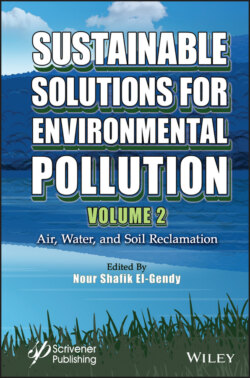Читать книгу Sustainable Solutions for Environmental Pollution, Volume 2 - Группа авторов - Страница 22
1.6.1 Water Flow
ОглавлениеWater flow type and retention time strongly influence the physical-chemical parameters (e.g., redox potential and insolation) in CWs. In surface flow systems, sunlight can promote possible photo-degradation of pollutants due to direct exposure of water. FSF-CWs and SSF-CWs have generally a barrier to prevent seepage toward aquifers. In some FSF-CWs, infiltration might be a goal in some cases, such as protecting a bathing area downstream the discharge point. However, the latter strategy can be dangerous as infiltration means the transfer of pollutants to underground aquifers.
The water balance calculation in case of infiltration is tricky because it must also take into account possible evaporation and evapotranspiration. However, it is clear that soil sealing of large CWs is difficult and expensive. Nevertheless, a soil analysis should be conducted prior to CW building to evaluate the infiltration capacity (Bouzouidja et al., 2020). This capacity may be spatially distributed and change overtime due to clogging (Lavrnić et al., 2020a).
Hydraulic loading rate (HLR) is the rate of water flow into a wetland. Hydraulic retention time (HRT) is the measure of time that a soluble compound remains in the system during water treatment. A lower HLR and HRT of about 6 days are required for efficient pollutant removal in CWs. However, HLRs are difficult to categorize as low or high as values from 135 to 5,140 L/(m.d) were reported as high HLRs (Chang et al., 2007). Length-to-width ratio of the wetland needs to be determined so that dimensions are worked out to accommodate inflow of water. One of the greatest causes of failure in CWs was found to be under sizing, thus resulting in inefficient water treatment. Dimensions need to be sufficient to handle water increase levels due to rainfall and adequate inlet and outlet systems to maintain water pre-rainfall levels. Water depth needs to be determined based on whether the type of CWs is FSF or SSF. The wetland depth for SSF-CW types is in the range 60 to 100 cm. In the case of surface flow wetlands, the mean depth is 30 cm (Wong and Geiger, 1997) and also depth of 2 m has been reported (Bois et al., 2017). SSF-CWs are more commonly reported as compared to FSF-CWs in literature, though both have different advantages. As previously mentioned SSF-CWs are beneficial when dealing with odorous polluted water, while FSF-CWs can beneficiate from direct aeration, which can be promoted by wind.
There is no specific design for CWs. In 1993, there have been already approximately 80 types of SCW designs proposed since 1980 (Reed and Clearinghouse, 1993). A majority of European systems are based on rooted emergent macrophyte systems (Haberl et al., 1995). CWs are designed to treat all kinds of urban and industrial wastewater and various runoffs (e.g., urban storm water and agriculture) and to polish already treated waste-water (Vymazal, 2009). Some CWs were even designed for phosphorus removal in natural waterbodies such as Lake Apopka in Florida (Dunne et al., 2012), Everglades in Florida (Zhao and Piccone, 2020), and Albufera in Spain (Martín et al., 2020). Understanding the phenomena taking place in natural wetlands helps to design properly these green (Zhang and Chui, 2019) or turquoise (Childers et al., 2019) urban infrastructure elements that are CWs (Martín et al., 2020). In terms of surface, CWs’ size ranges can differ largely. Zhao and Piccone (2020) report on a 6,600-ha FSF-CW in Florida to reduce phosphorus load from stormwater agricultural runoff and protect the Everglades Protection Area (Zhao and Piccone, 2020). On the other hand, Gaullier et al. (2020) discuss the efficiency of two small FSF-CWs (0.01 and 0.02 ha) built just downstream single agricultural plots (10 and 8 ha, respectively) (Gaullier et al., 2020).
